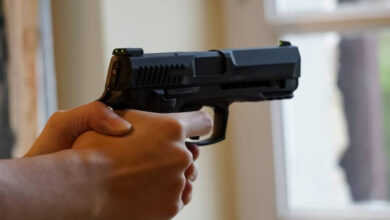Keeping Warm When the Lights Go Out
There’s a bit of a tendency in the prepping and survival community to think big, when we think of survival. We’d much rather talk about surviving a TEOTWAWKI event, than surviving the common problems we all face. Perhaps we’ve been infected by Hollywood a bit here, in that the normal just isn’t all that exciting. But normal survival situations, of the type that people face every day, just aren’t anywhere near as exciting or attention grabbing, as surviving through a blackout in the winter.
As we all know, winter is coming. Here where I live, we’ve already had a couple of cold spells. Trying to keep my wife warm brought Winter Storm Uri to mind, which hit the nation just a few short years ago.
Uri hit Texas more seriously than any other part of the country. Part of that was due to Texas having a separate electric grid, but another part is because most Texans really aren’t prepared to deal with the cold… especially when the power goes out. That lack of preparation turned what should have merely been a big inconvenience, into a life-threatening situation that claimed the lives of at least 246 people.
As preppers, keeping our homes warm when there is no power is something we all talk about. The common answer is to use wood for heating our homes. Hopefully you’ve already installed a wood-burning stove in your home and have a goodly stock of firewood. If not, there’s probably not much time left before the Biden Administration manages to outlaw them. Even if you can’t install it now, try to buy one, so that you’ll have it available to install later. Buy the most energy-efficient model you can, so that you’ll get the most possible heat from the wood you burn.
But What if You Can’t?
There are a lot of people who can’t put in a wood-burning stove, for one reason or another. Somewhere around 36 percent of American households lives in rented homes, between single-family homes and apartment dwellers. Few landlords will allow the installation of a wood-burning stove in their property, even knowing that it will increase their property value. They don’t want to risk a poor job being done and don’t want to accept the fire risk that is believed to be associated with a wood-burning stove.
That means finding an alternative heat source. We all know that it’s not a good idea to use your stove and oven for heat, or to bring the barbecue grille inside as a makeshift fireplace. The bigger danger with both of those options isn’t the fire danger; but rather the danger of asphyxiation. Killing yourself, to try and save your life, isn’t very efficient. Of course, if you have an electric stove, rather than gas, it’s not going to provide any heat when the power is out anyway.
Fortunately, there are other options open to us. Two that I’ve used very effectively are kerosene heaters and propane heaters. Kerosene heaters are portable heaters that burn kerosene. That works out great in areas where you can buy kerosene as a fuel oil; but I wouldn’t recommend it to the people in Texas. As best as I’ve been able to find out, the only kerosene available anywhere in Texas, is through paint stores and lumberyards that sell paint. That’s a very expensive way to buy kerosene. Up north, on the other hand, kerosene can be bought in some gas stations and propane filling stations as a fuel, at a very reasonable price.
Propane works well too and can be bought anywhere, as it is used for other things, like gas barbecue grilles. The one thing you’ve got to be careful about thought, is making sure that your propane heater is rated for indoor use. Kerosene patio heaters cannot and should not be used indoors. On the other hand, I have a small propane heater that’s rated for indoor use and will keep my 400 square foot family room toasty warm.
There is a drawback to these small propane heaters though. That is, they run off of one-pound propane bottles, which cost somewhere around $5 each. That can get a bit expensive, even when we consider that it’s better than freezing to death. There is a cost-effective solution though. Buy an adapter, which allows you to fill those little bottles off of a 20-pound propane tank (the kind used for barbecue grilles). That will take the cost down from $5 per bottle to about $1 per bottle.
In any emergency situation, we shouldn’t be worried about heating our whole home, but rather move into a small part of our home and keep that warm. Heating your whole home, using emergency measures, is beyond the realm of being realistic. On the other hand, it’s actually rather easy to heat one or two rooms and close off the rest of the house or apartment temporarily.
There’s More to it Than Producing Heat
While everyone focuses on producing heat, that’s not the big issue. A much bigger issue is keeping your home from losing the heat that you’re creating, especially during a time of crisis, when you can’t produce unlimited heat.
Let’s face it, most of our homes leak a lot of heat. Some of that is due to the design of our homes and some is due to what we could call maintenance issues. We need to deal with both, especially in our designated “cold weather survival room.”
When I talk about maintenance issues, I’m talking about air leaks, usually around doors and windows. These are usually fairly easy to find, especially when it is windy outside. The cold air you feel blowing into your home is a sure sign that there’s an air leak somewhere. Chances are it is around a door or window, where the weatherstripping has either become damaged or has become ineffective due to the house settling and increasing the gaps around those doors and windows.
Repairing poor weatherstripping is easy, with self-stick foam weatherstripping. That may not be as good as the original, but it doesn’t cost much and can be put in, I a matter of moments. That makes it worth using.
After that, be sure to check your attic insulation. If your home is more than a few years old the attic insulation may have settled, reducing its R-value. It doesn’t take much to blow in more insulation and the effort pays in dividends, both in a warmer home and in reduced energy costs.
Ok, so that’s the “normal” stuff; but there’s much more that we can do to keep our homes warm when the power is out and we’re trying to get the most out of our emergency heating.
Start by dealing with the worst insulated parts of that room. That is, the windows and doors. The insulating value of windows, even triple-pane windows, is dismal and doors aren’t great either. While it may not be possible to bring those up to the same insulating value as the walls, hanging a blanket over the windows, especially a thick blanket, will go a long way towards helping to keep the heat in. While you’re at it, roll up a couple of towels and put them at the bottom of the doors, sealing off that air leak.
Don’t forget about the doorways leading into the rest of your home. A lot of heat can escape through those, if they are left open. Hang some blankets over those as well, making sure that the blanket is wider than the doorway opening. It makes no sense to lose heat to parts of the house you’re not using.
Don’t Forget the Most Basic Insulation
The most important part of all this is the one that people are the most likely to forget; that is, dressing warmly. I’ve spent a lot of time in Mexico, where most of the people I know don’t have heat in their homes. They regularly wear their coats indoors on cold days, keeping themselves warm.
It’s always better to dress in layers, if we want to stay warm. Those layers of clothing trap air in-between them, helping increase the insulation you get from the clothing. Don’t forget to throw a blanket over yourself too, if you’re sitting in one place. For that matter, a blanket can go a long way towards keeping you warm in the car, when you have to go out.
Speaking of blankets, that should be one thing that any prepping family has plenty of. There’s no such thing as too many blankets, when a cold spell hits and the power is out. The thicker the blankets the better. You can often find them at garage sales, where people sell them, when they’re going for a new style. That’s okay, survival has no style; just warmth.
Use Food for Heat Too
Finally, make sure you eat in a way that will help keep your body warm. Cold weather is not the time to be drinking iced tea or cold sodas. Drink warm drinks as much as possible and eat warm food whenever you can. Your body will be needing lots of carbs, so that your muscles can convert that energy to heat. While your body can pull some of those from fat reserves, it can’t do that anywhere near fast enough. More than half the carbs your body needs, or one-fourth of your total caloric intake, has to come from carbs that your body can process into simple sugars quickly.
Read the full article here






